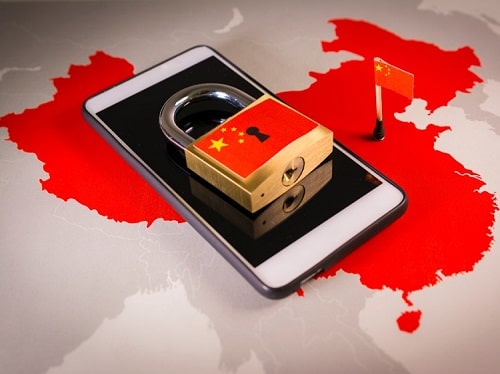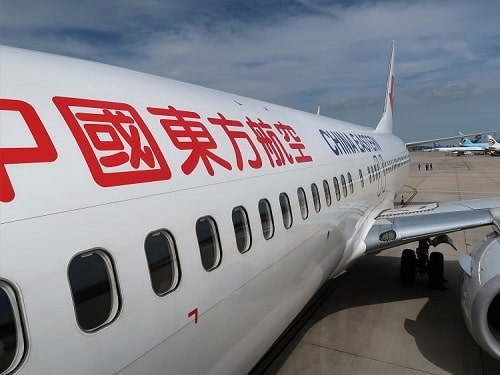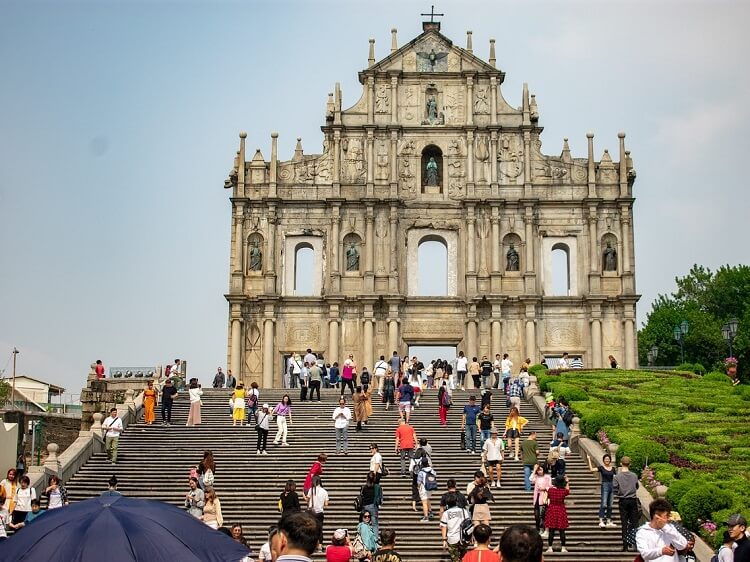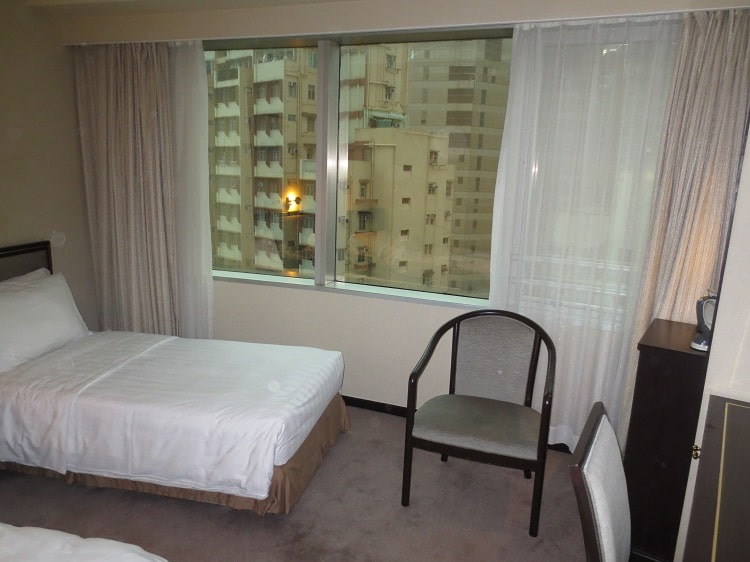


 BEST GUIDE TO CHINA
BEST GUIDE TO CHINA
Select Page
Visiting China soon? Start here
Hong Kong
South China
7.5 million
Cantonese
Hong Kong is an amazing city in a little area and packs a big punch. Connected to the Chinese mainland and spread out over a couple of small islands, it’s a shopping and business mecca.
Although Hong Kong is definitely Chinese, it retains enough of its English influence to feel very familiar to Western travelers. This also makes it remarkably easy to navigate as you’ll find English everywhere as well as amenities set up to support tourists.
One of the best things about Hong Kong is the cultural mix crammed into such a small area. It’s a city that has melded the east and the west to create something new, and the people, the food, and the traditions all reflect that harmony.
The people who live in Hong Kong are a mix of Cantonese, Shanghainese, British, Indian and Jews. This is an unusual combination and yet it works surprisingly well.
As a result of this inclusiveness, you’ll find that the locals are friendly, welcoming and open-minded. These qualities are what make Hong Kong a great way to experience a part of Chinese culture without getting overwhelmed by it.

Hong Kong has its own mix of cultures. Image by Photosforyou on Pixabay.

A typically busy street in the city. Image by Marci Marc on Pixabay.
Hong Kong is a great destination for tourists because it has something for everyone.
For kids, there’s Disneyland and the nature reserves, while adults will enjoy the vibrant nightlife and the great shopping. There are also amazing festivals and sporting events for visitors of all ages.
For such a small area, Hong Kong offers a lot of attractions. You might need more than a couple of days to explore this city!
Everyone who visits Hong Kong goes to Victoria Peak. It’s one of the many things that Hong Kong is known for.
Take the tram and enjoy the views of the green spaces and skyscrapers along the way up to Victoria Peak, the highest point on Hong Kong Island.

The most famous view in Hong Kong. Image by Fabian Bölling on Pixabay.
From there, you’ll enjoy a bird’s eye view of the city and the waterways. And on clear days, you can even see as far as the green hills of nearby islands.
You can also take the trip at night for a stunning light show.
The Hong Kong Museum of History is huge but it’s worth the effort if you want to learn more about the city.

Head to the museum if you want to learn more about the past. Image by WR studio on Shutterstock.
It has exhibits on natural and social history, archaeology, and more, so give yourself a couple of hours to wander through everything.
Dim sum is a collection of small, bite-sized dishes.
There’s an amazing variety of different dishes offered at restaurants all over the city, so make sure you try as many as possible and see which dishes you like best.

Dim sum is a huge part of Hong Kong food culture. Image by Alice Cheung on Pixabay.
For some specific places to eat, check out the section on food further down.
Even if you’ve been to Disneyland in other countries, the Hong Kong location on Lantau Island is still worth seeing.
It’s classic Disney with a Chinese flair and will keep the kids happy for hours if not days.

Stay overnight at Disneyland in the park’s resort. Image by Russel Jhon Seares on Unsplash.
Lantau has a lot more to offer than a cartoon mouse. The island is filled with dense forest, small villages, and beaches as well as must-see cultural sites like the Wisdom Path and the Big Buddha.
So, make sure you take the time to get off the beaten path a little.
One of Hong Kong’s most famous temples, it’s said that the temple makes every wish come true.
This probably isn’t true, but what is true is that the temple is beautiful and located in stunning natural surroundings.

Burning incense at Wong Tai Sin Temple. Image by Paulo Evangelista on Unsplash.
Dedicated to Taoism, Confucianism, and Buddhism, it’s also one of the most unique temples you’ll find in the city so make sure you check it out.
Macau is a Chinese self-governed island territory only an hour from Hong Kong by ferry.
It’s best known for its casinos, so of course you can spend some serious money there. But if you aren’t into risking a lot of cash, then make sure you visit for the culture.

Ruins of St Paul’s in Macau. Image by Kon Zografos on Pixabay.
Macau was a Portuguese territory until 1999, so it’s very different to Hong Kong. Make sure you check out the Portuguese architecture and try the local food too.
If you’re only going for the day, don’t worry about exchanging your money for the local currency, the Macanese Pataca. Most businesses accept Hong Kong dollars.
Check out the cool things to do in Macau if you plan on spending more time on the island.
The Tsim Sha Tsui Promenade is on the Kowloon waterfront, one of the areas that make up Hong Kong.
It offers great views of the Hong Kong Island skyline as well as the best people-watching in the area.

Grab a bite to eat at Tsim Sha Tsui. Image by Eugene Production on Unsplash.
The promenade is filled with shops, restaurants, and attractions, so take your time and really explore.
And if you’re there after dark, then try some traditional Cantonese food at the outdoor market that springs up on the promenade.
The Big Buddha is located on Ngong Ping, Lantau Island, only a short trip away from downtown HK.
Almost everyone who travels to Hong Kong sees the Big Buddha, so expect crowds of tourists during your visit.

Like the name suggests, the Big Buddha is huge. Image by Steve Webb on Pixabay.
And take a hat and sunscreen with you too, because it’s a long walk upstairs in the heat.
Located right in the heart of the city, this garden is a welcome surprise amidst all the concrete.
It’s a traditional Chinese garden created in the style of the Tang Dynasty, which stretched between 618 and 907 AD.

The serene Nan Lian Garden. Image by Adam Hill on Pixabay.
The garden is elegant, beautiful, and relaxing, with lots of water features, bridges, and wooden structures to explore.
Hong Kong is known as one of the eating capitals of the world and for good reason.
There aren’t words to describe how good the food is in this city, so just sit back and forget about your diet.
And thanks to the cultural mix, you’ll find dishes that suit every palate.
Once called the cheapest Michelin starred restaurant in the world, Tim Ho Wan is the best place in Hong Kong to try dim sum.
It began its life as a tiny hole-in-the-wall eatery in Mong Kok. There are now several locations around the city, and the quality of the food hasn’t gone down with the new locations.
You can even find Tim Ho Wan restaurants in Asia, America and Australia, but you’ve got to try it where it originated – Hong Kong. You can find all the locations here.

Tim Ho Wan is eternally popular. Image by Min Jing on Shutterstock.
Make sure you try their baked BBQ pork buns while you’re there. They really are the best thing on the menu.
You can’t visit Hong Kong without trying some traditional Cantonese food and Yung Kee offers some of the best in the city.
Visit at lunchtime for their delicious roast goose with plum sauce right out of the oven.
Address: 32 Wellington St, Central
There are always locals queuing for a bowl of noodle soup from this restaurant, so you know that the food must be good.
Cheap, cheerful, and quick, this is fast food in delicious HK style! Make sure you try a bowl of their famous beef brisket soup for a tasty midday meal.
Address: 21 Gough St, Sheung Wan
This street stall was on the inaugural Michelin Hong Kong street food guide and it’s still one of the most popular stalls in the city.
With several branches in the city, they offer a black truffle sheng jian bao that you have to taste to believe.
It’s similar to a traditional steamed bun but made with thicker dough. But even if you don’t like truffles, there are plenty of other amazing dishes on the menu worth eating.
Address: 48 Lock Rd, Tsim Sha Tsui
Check out some more Chinese street food here.
There are a huge variety of markets of all kinds in Hong Kong and most of them are worth a visit.
But if you want to try the freshest and tastiest foods, you can’t miss out on these food markets.
This market is surrounded by cafes and restaurants, but the food stalls are still the star.
You can find everything here from traditional Chinese food to pizza, so you definitely won’t go home hungry.

Temple Street Night Market. Image by Florian Wehde on Unsplash.
In fact, it’s probably best if you fast for most of the day before a night in this market!
If you like seafood, then you’ll enjoy this market.
Close to the Mui Wo ferry pier, it’s small but offers some of the best seafood dishes in the city.
This is where you’ll find delicious classical Cantonese dishes.
It’s noisy and chaotic and a bit overwhelming if you aren’t used to Asian markets, but well worth the effort.
There’s a huge range of Hong Kong accommodation options at every budget point.
Just remember that the accommodation may be a little different to what you’re used to back home.
For instance, the rooms can be very small, with lots of space-saving shortcuts that you won’t find in other Chinese cities. So, in terms of value for money, Hong Kong hotels may seem expensive.

A small hotel room in Hong Kong with basic view. Image supplied by Mike Cairnduff.
And if you want a room with a view, you’ll have to pay more for that.
The Hong Kong Hostel is close to Metro station, Victoria Park, and some of the most popular shopping areas in the city.
It has private and group rooms with their own bathrooms and common rooms for socializing.
The Holiday Inn Express in Mong Kok is convenient to the Metro and to Temple Street and the Ladies Market.
With comfortable rooms and lots of amenities, this hotel balances convenience, comfort, and budget almost perfectly.
Hong Kong is a great city to go luxurious in if you have the cash, and this swish hotel is part of the reason why.
The K11 Artus has a restaurant, indoor pool, sauna, and sun terrace and is just steps from attractions like the Avenue of Stars. The rooms are fairly large for Hong Kong as well.
Transport in Hong Kong is fast, modern, readily available, and relatively cheap as well.
Best of all, most of the signs are in English, so you shouldn’t have any trouble moving about.
Chances are you’ll arrive in Hong Kong by plane.
Hong Kong International Airport (HKIA) is big, modern, and offers great connections around China and to the rest of the world.
It’s pretty easy to get from the airport into the main part of the city. You can take the train, which takes about 25 minutes to get into town, or you can take one of the shuttle buses.

HKIA is one of the busiest airports in Asia. Image by Falco on Pixabay.
Big hotels also have their own shuttle buses, though they may not be as frequent.
If you’re planning to use public transport while you’re in the city, then get an Octopus Card at the airport. Or, just wait until you’ve settled in to your hotel and then pick up a card at one of the many convenient Oyster Card outlets such as 7-Eleven.
You use it like a debit card – load it with cash and tap the card to use public transport.
The Guangzhou-Shenzhen-Hong Kong Express Rail Link opened in 2018 and connects Hong Kong with more than 40 big cities in China. This includes Shanghai, Beijing, Shenzhen, and Xi’an.
It’s a fast, modern, and relatively inexpensive way to travel from Hong Kong into the bulk of China.
The Mass Transit Railway, or MTR for short, is the best and easiest way to get around the city with your Octopus Card.
It connects all of Hong Kong’s islands and is fast, fairly easy to navigate, and relatively cheap. Just try to avoid the train at peak hour, because it gets incredibly crowded.

The MTR is a great way of getting around. Image by Andy Leung on Pixabay.
You can plan your journey and get the latest fare information on the MTR website.
Taxis in Hong Kong are plentiful, safe, and cheap. Red taxis service the urban areas, Lantau Island uses blue taxis, and the New Territories have green taxis.
Your driver will use the meter and will probably speak quite good English, but have your destination written down in Cantonese just in case.

Catch one of the classic taxis or a rideshare in HK. Image by Lukas Kurucz on Unsplash.
The fares are a little strange in Hong Kong, with lots of extra charges like baggage and underground tunnels, so ask questions if you’re unsure about what you’re paying.
There are also more than 14,000 Uber drivers (and their equivalent) all over the city.
Bus routes in Hong Kong cover almost all of the urban area and the islands. They’re popular among the locals, but you won’t feel out of place if you decide to grab the bus somewhere.
You can pay for buses by cash but remember to have exact change as the driver won’t give you any.
If you don’t like using cash, get an Octopus Card as it will make things a lot easier.
Double-decker trams run up and down northern Hong Kong Island.
Locals call the trams ‘ding dings’ for the iconic sounds they make, and tourists love taking photos of them. Sit on the upper deck for the best views!

An old-school Hong Kong tram. Image by Andy Leung on Pixabay.
The fares are cheap, and the sights are interesting, so make sure you take a ride once you’ve got your Octopus Card (or pay the exact amount in cash).
Just remember to get on the tram at the back and then pay the fare at the front when you’re getting off.
The Star Ferry travels between Hong Kong Island and Kowloon and has been running since 1898. Along the way, it offers amazing views of the harbor and the skyscrapers, so is well worth the trip.
Make sure that you get a ticket on the upper deck for fresh air and sea views. The lower deck is cheaper, but you probably won’t enjoy the trip as much.

View from the Hong Kong ferry. Image supplied by Mike Cairnduff.
The ferry runs from very early to late and the trip across the water only takes about 10 minutes.
Most people spend all their time in the center of the city and forget that there is more than Hong Kong Island and Kowloon to explore.
If you have the time, there are lots of day trips you can take from the city if you want to see something a little different.
Just 40 minutes from Hong Kong by ferry, Cheung Chai is an island that has great beaches, historic attractions, and amazing seafood restaurants.

Picturesque Cheung Chau. Image by Paulo Evangelista on Unsplash.
If you want to get away from the city and relax on the sand, this is definitely where you should do it!
You probably don’t think of Hong Kong in connection with nature, but this day trip will change your mind.
Just 40 minutes from the city by car, the marshes are run by World Wildlife Fund and you will need to apply for a permit a few weeks before your trip to make sure that you’re allowed in.

Mai Po Marshes. Image by Karen.T on Shutterstock.
Once there, you’ll see one of the best nature reserves in southern China, with a wide variety of bird species, mammals, and reptiles.
You can get a special visa allowing you to spend up to six days in Shenzhen (mainland China).
Catch the train from Hong Kong to Shenzhen and apply for your visa on arrival, or go on an arranged tour from Hong Kong and the tour company will sort out the visa for you.
Just keep in mind that navigating the border can be a little crazy, as Fiona writes about here.

Shenzhen is enormous and not far from HK. Image by Darmau Lee on Unsplash.
Shenzhen is China’s Silicon Valley and the city is booming, so there are plenty of things to see and do there. The city is different to Hong Kong though and you may even get a bit of a culture shock.
Avoid Lo Wu Shopping Mall – often visited on package day trips from Hong Kong – unless you’re into poor-quality goods.
Get a visual taste of Hong Kong before you visit!
Take a look at extreme high density apartment living in this interesting video. The complex is now known as the Monster Building after it shot to fame in the movie, Transformers.
And in this video, experienced traveler Mat helps you decide what to do, where to go, where to stay, and what to eat in Hong Kong.
Going on a tour in China is a great idea, especially if you can’t speak Mandarin.
You can refer to this list of China travel agencies who can help put a plan together for you.
Or, to book your own flights, tours and hotels, we recommend Trip for amazing choice and value. Trip is one of the leading travel companies in China.
It’s easy to forget a thing or two before you head to China.
So, here are some reminders for you:
Have a wonderful time in Hong Kong!
Then hop on the newsletter!
Let’s chat about Hong Kong!
We welcome relevant and respectful dialogue. See our terms for our comment policy.
Page last updated 26 October 2023. Main image credit: Marci Marc on Pixabay. Commercial relationship disclosure: The Helpful Panda has commercial arrangements with organizations that may appear on this page, such as affiliate links. See our terms for more info.
Do you want to build your career in China?
VIEW JOBS



Our writers have all experienced China in person. Support them by subscribing to the free monthly newsletter about visiting China.